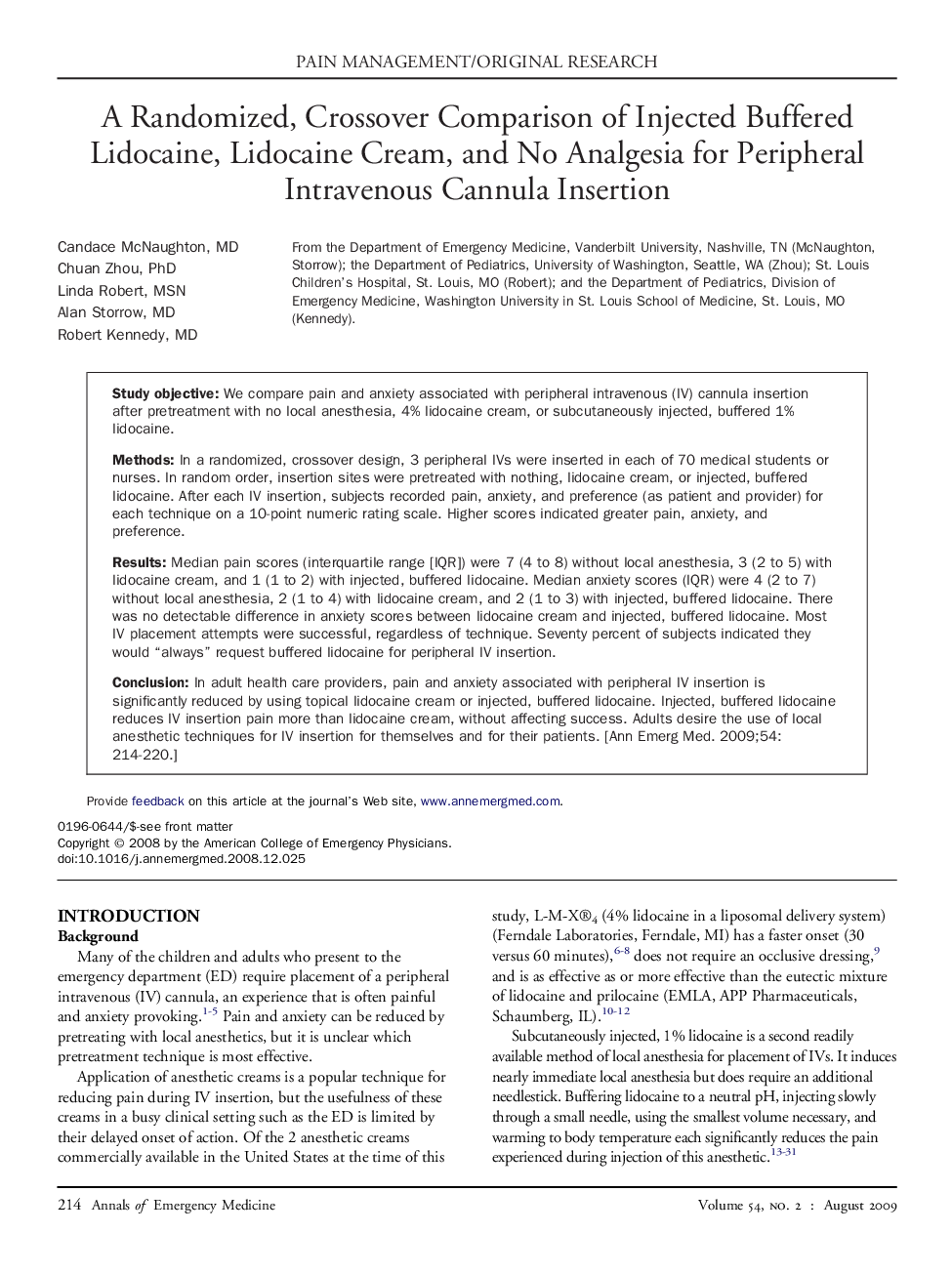| Article ID | Journal | Published Year | Pages | File Type |
|---|---|---|---|---|
| 3232334 | Annals of Emergency Medicine | 2009 | 7 Pages |
Study objectiveWe compare pain and anxiety associated with peripheral intravenous (IV) cannula insertion after pretreatment with no local anesthesia, 4% lidocaine cream, or subcutaneously injected, buffered 1% lidocaine.MethodsIn a randomized, crossover design, 3 peripheral IVs were inserted in each of 70 medical students or nurses. In random order, insertion sites were pretreated with nothing, lidocaine cream, or injected, buffered lidocaine. After each IV insertion, subjects recorded pain, anxiety, and preference (as patient and provider) for each technique on a 10-point numeric rating scale. Higher scores indicated greater pain, anxiety, and preference.ResultsMedian pain scores (interquartile range [IQR]) were 7 (4 to 8) without local anesthesia, 3 (2 to 5) with lidocaine cream, and 1 (1 to 2) with injected, buffered lidocaine. Median anxiety scores (IQR) were 4 (2 to 7) without local anesthesia, 2 (1 to 4) with lidocaine cream, and 2 (1 to 3) with injected, buffered lidocaine. There was no detectable difference in anxiety scores between lidocaine cream and injected, buffered lidocaine. Most IV placement attempts were successful, regardless of technique. Seventy percent of subjects indicated they would “always” request buffered lidocaine for peripheral IV insertion.ConclusionIn adult health care providers, pain and anxiety associated with peripheral IV insertion is significantly reduced by using topical lidocaine cream or injected, buffered lidocaine. Injected, buffered lidocaine reduces IV insertion pain more than lidocaine cream, without affecting success. Adults desire the use of local anesthetic techniques for IV insertion for themselves and for their patients.
